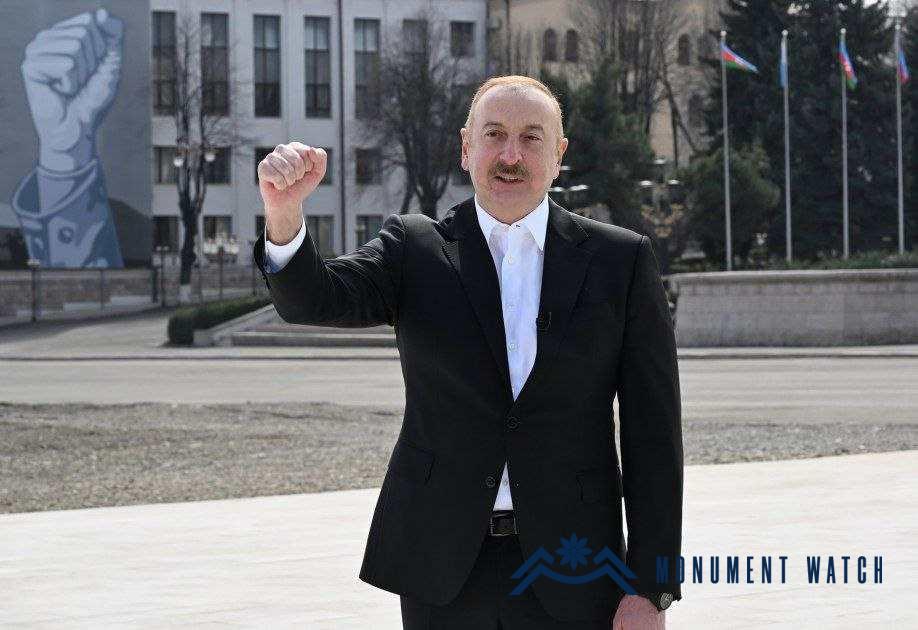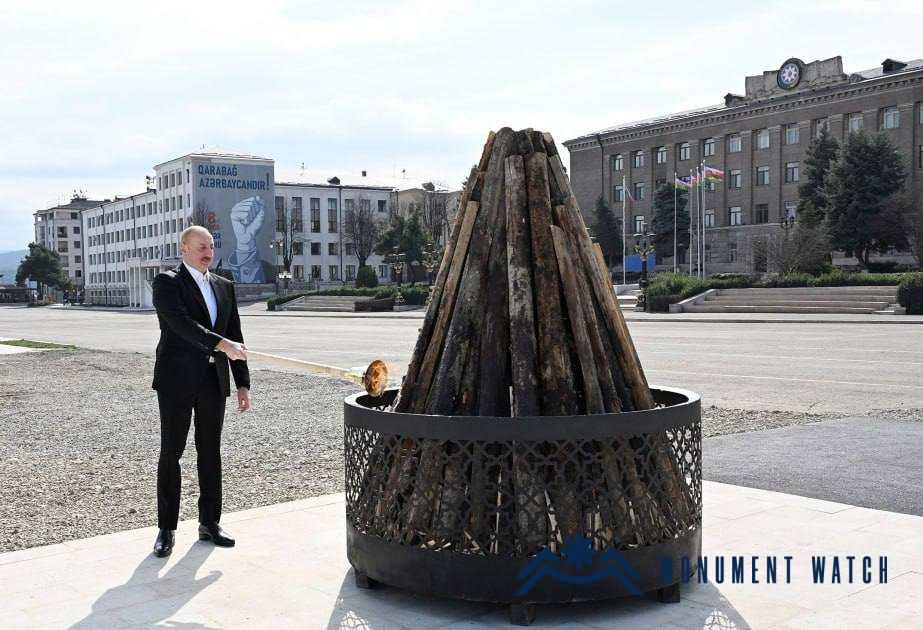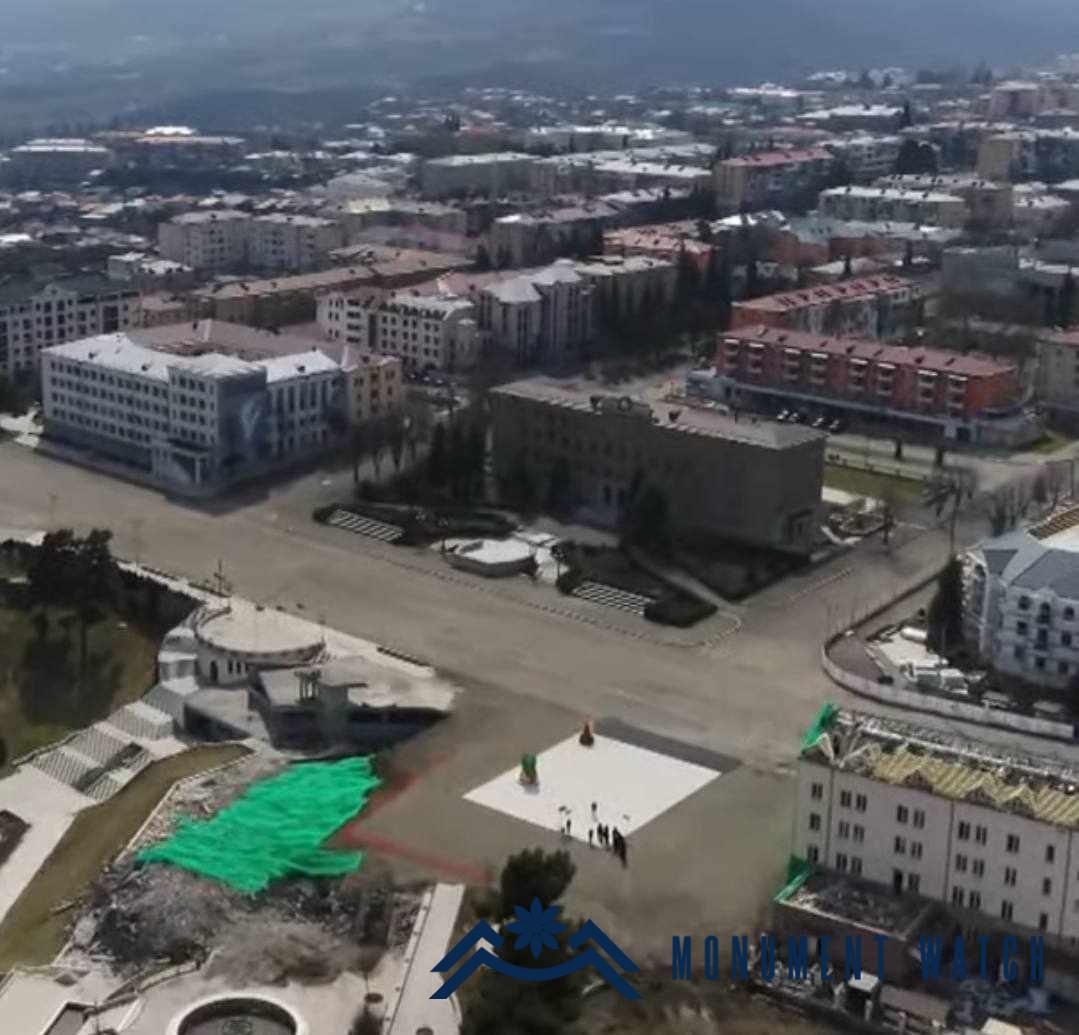The “iron fist” of the aggressor
Following the conclusion of the 44-day war in 2020, the Azerbaijani propaganda apparatus disseminated various symbols of "victory," one of which was closely associated with Azerbaijani President Ilham Aliyev himself: the so-called "iron fist." During his address marking the end of the conflict, Aliyev famously displayed his clenched fist, symbolizing triumph, while enumerating the names of regions captured by Azerbaijani forces (https://az.sputniknews.ru/20210626/V-Gadrute-poyavilsya-Zheleznyy-kulak-427320540.html).
Beginning in 2021, the Azerbaijani propaganda apparatus began referring to the "iron fist" as the 2020 operation aimed at liberating the occupied territories.
Moreover, President Aliyev has imbued this gesture with significant propaganda symbolism, using it to demonstrate his strength and resolve to "punish Armenians," inflict strikes, and decisively confront the enemy (https://www.youtube.com/watch?v=MbTChh9cUwM). In 2021, during his visits to the occupied region of Artsakh, President Aliyev consistently incorporated the "iron fist" gesture into his speeches, using it particularly when discussing Armenia and Artsakh. Concurrently, the Azerbaijani propaganda machine commenced widespread dissemination of photos depicting Aliyev making this gesture. Additionally, within Azerbaijan, a parade featuring the installation of statues known as "Iron Fists" began as a symbolic representation of this gesture's significance.
The following symbols were intentionally created as propaganda and were exclusively placed in the occupied region of Artsakh, specifically in Hadrut (https://qafqazinfo.az/news/detail/hadrutdaki-demir-yumrugun-muellifi-danisdi-328095) , Berdzor (https://www.youtube.com /watch?v=0PGfU4CMgL8), and Karvacharm (https://www.youtube.com/watch?v=UAt_GfTPtx0) . The first statue was installed in the center of Hadrut city, serving as a unique symbol to commemorate Azerbaijan's capture of this significant area.
Based on the videos and information disseminated by the Azerbaijani propaganda apparatus, it appears that plans are underway to install a similar statue in Stepanakert, the capital of the occupied region of Artsakh (https://www.youtube.com/watch?v=GSvgSPvPCoI). The swift dismantling of the statue of Stepan Shahumyan following the occupation of Stepanakert, along with the emergence of discussions regarding the removal of the "We are our mountains" monument, underscores a deliberate effort to suppress symbols of Armenian identity.
The "iron fist" symbolizes direct aggression against all expressions of Armenianness. Its presence in Artsakh serves as a potent emblem of Azerbaijani dominance, signifying victory over Armenians and the territorial conquest. For the Azerbaijani side, the "iron fist" represents the eradication of Armenian Artsakh and all associated consequences. This agenda accelerated notably after the complete depopulation of Artsakh, with systematic efforts to eliminate every symbol linked to Armenian identity. Emblems of Artsakh were swiftly removed from government and presidential buildings in Stepanakert, replaced by a prominent banner depicting the "iron fist" on the main facade of the government building.
At the close of February 2024, the Artsakh parliament building met its demise, and on March 18, Ilham Aliyev visited occupied Stepanakert, delivering a speech from the platform established following the demolition of the Artsakh National Assembly building and the Freedom Fighters Union building. During his address, Aliyev raised his fist while also participating in the lighting of the Novruz bonfire (https://t.me/bakinskiy_nord/35706?single). In his address, Aliyev referred to the building of the Artsakh National Assembly as a "devil's den," emphasizing its negative connotations. He then associated the lighting of the Novruz bonfire with the act of final purification, symbolizing the cleansing or purging of undesirable elements. (https://t.me/Caucasian_bureau/74711).


